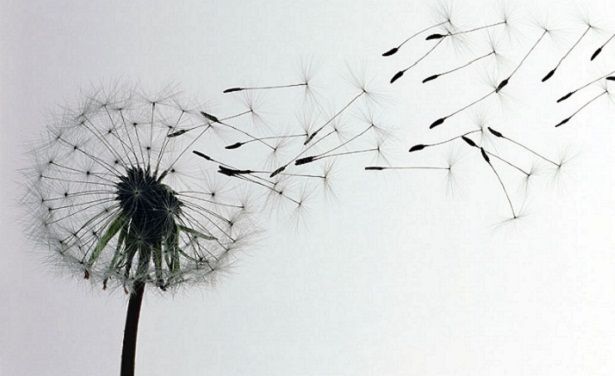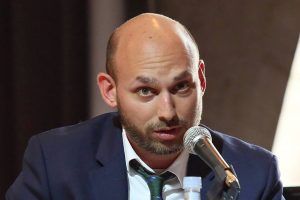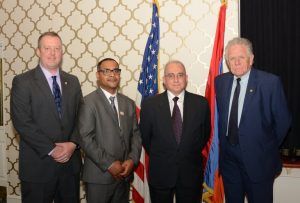Armenian Architects Around the World: Gulizar Jonian

Hayern Aysor electronic newspaper of the RA Ministry of Diaspora, in association with the Pan-Armenian Association of Architects and Engineers, has started a new series entitled “Armenian Architects Around the World,” aimed at presenting the activities of the pan-Armenian association, as well as the members and activities of the Association’s representations based in different countries around the world.
Gulizar Jonian: “Leaving with heartfelt nostalgia for my next return to the Homeland”
Karine Avagyan: Mrs. Jonian, what is the purpose of your visit to the Homeland? Were you in Armenia to participate in the events dedicated to the Independence of the Republic of Armenia and enjoy the colors of autumn in Armenia, or were you here simply because you had a longing for the country?
Gulizar Jonian: Both. We have always aspired to visit Armenia at least twice a year, once in April to pay our respects to the memory of the innocent victims of the Armenian Genocide of 1915 at Tsitsernakaberd’s Armenian Genocide Memorial Complex, and again in September to attend the events dedicated to Independence Day. As far as autumn is concerned, my father, Grigor Jonian, who was a painter and sculptor, loved the colors of autumn and would always bring leaves home (we lived in Iraq) and say “this is also nice, but the leaves in Armenia are something else…” We travel the world very often, but we always try to visit Armenia first.
Karine Avagyan: You are an architect, the Chairwoman of the International Business Women’s Group (IBWG) in Abu Dhabi, as well as a businesswoman. You have also published children’s books in the past. Which is more important for you and in which sphere do you think you are more successful?
G. J.: I am one of the founding members of the Pan-Armenian Association of Architects and Engineers (PAAAE), the co-chairs of which are Vahe and Kohar Toutounjian and Ashot Grigoryan. Of course, I am an architect by profession. After obtaining a B.Sc. degree in my hometown of Baghdad, I continued my studies in London, and went on to work with an international firm, eventually branching out to Abu Dhabi as their Partner. I have always managed to stay active in the community even while continuing to develop my various businesses. Architecture is very close to my heart and has helped me a lot in other fields. Architecture has taught me how to see colors, lines, patterns, and even appreciate music. For me, architecture is a “colorful sound,” a painting, a sculpture, and part of nature. Even if I never went on to become a practicing Architect the way I did, I would always be grateful that I studied it and that it formed my base. In my prime, I turned to project management and soon realized that I had a passion for this field as well, and that moreover, I could excel in it. I love to create and manage projects. I love to be busy and choose difficult paths. I attach great importance to the role of women in society, politics, and business and have always thought of ways of empowering women. Women can work anywhere, help their husbands and families, but they also need to move forward and become engaged in community service. They need to learn how to have the will and rhetoric of a leader. Indeed, Armenian women can achieve all of this. I receive many invitations to speak at professional congresses where I explain how women can grow and progress. In Armenia, I have also participated, as a guest, in the meetings of the Armenian International Women’s Association (AIWA), which is a good forum, but more socially oriented. I give more preference to the issues of working women who are aspiring to move forward. If a woman, especially an Armenian woman is strong and is spiritually powerful and can do a lot, why shouldn’t she achieve progress? Indeed, it is hard, but I think it’s not difficult in Armenia. Look, 30 percent of the Ministers in the United Arab Emirates are women. In Armenia, the ministers are mostly men. In Abu Dhabi, the Speaker of the Parliament is a woman (and an architect at that!). Yes, I have also published children’s books in the past and that also gave me joy and satisfaction. For the past two years, my daughter Anushka (who runs a large medical center) and I have been running another company that is in charge of organizing various kinds of events and initiatives. I believe, if one undertakes an initiative, he has to focus entirely on that, finish it and then move on to the next one.
Karine Avagyan: Let’s talk about the field of architecture. Do you think Armenia preserves the traditions of Armenian architecture? What are your suggestions? What changes would you make in the field?
G. J.: In response to your first question, I would say yes and no. The traditions of Armenian architecture are not preserved everywhere. When I walk on the streets, I get emotional when I see old, beautiful and patterned buildings in poor conditions. Then, I notice new buildings and see a big difference between the old and the new. There is no delicate harmony. In England, if you want to renovate a building, you need municipality approval. You can’t even change the color without their blessing! Hence, the field is regulated. Nobody has the right to and can’t change the structure of yards and streets according to his or her taste. Traditional Armenian architectural buildings in Yerevan and in other cities could be, and should be, preserved as museum samples and historic buildings. This is also one of the best ways of promoting tourism. We need to do whatever we can to preserve at least the facades of old and beautiful structures by renovating the interior. You can’t amaze foreigners with new buildings that are often built in inappropriate places, covering a good view or a beautiful building.
Karine Avagyan: Mrs. Jonian, you have toured the world, lived and worked in different countries and seen the works of art created by different civilizations. Which is your favorite architecture at the global level?
G. J.: Greek, Italian, and British architectures are beautiful, but for me, the most beautiful architecture is the Armenian. I have seen many beautiful buildings and marvelous historic and cultural monuments in the world, but it seems as though Armenian historical and cultural monuments are not simply made by hand. There is a spirit within them. Geghard Monastery is so symbolic! The repository of ancient manuscripts (Matenadaran) is so marvelous! I like the new building of the Municipality, the color is beautiful, and the decorations. The Armenian tuff stone offers so many opportunities! It allows us to build structures with our own architectural solutions. We definitely need to use the elements of traditional Armenian architecture in a way that they are in line with the new when constructing buildings. The architecture of every nation needs to be used in the particular environment. For instance, Armenian architecture, better yet, its characteristics, can’t feature those derived from countries in the Near East.
Karine Avagyan: Do you like the architecture in the United Arab Emirates, that is, the eye-striking buildings built within the sands? How would you assess them as an architect?
G. J.: Of course, they are very modern. I was one of the first architects to do a glass building. In the beginning, not many people liked it, but now, it is accepted. I don’t like all the buildings in the UAE. There are many tasteful buildings, and there are also bad ones. If a building is slanted, another is round and another is rectangular, that still doesn’t mean that those buildings are beautiful. They are often similar to each other.
Karine Avagyan: What does the International Business Women’s Group (IBWG) do?
G. J.: In Abu Dhabi, the International Business Women’s Group (IBWG) is engaged in empowering working women, it unites businesswomen and helps them grow as individuals in society and business. Our members are of different nationalities. We organize networking events once or twice a month, and invite experts to deliver lectures and workshops, targeting topics that can interest the working woman and assist her to reach true potential in her field of expertise. There are about 20 business groups in Abu Dhabi, but they are co-ed. Our organization is the only international women’s organization. Every March, a number of other business groups participate under our sponsorship to celebrate the International Women’s Day. We organize a large event and banquet, featuring speakers who are inspiring community leaders and professionals. I am the Chairwoman of the group, and I do get invited to speak about women empowerment at various forums, of course I do that on volunteer basis.
Karine Avagyan: Mrs. Jonian, you came to Armenia in the first month of autumn in Armenia and satisfied your longing for Armenia. What do you wish Armenia, which has been independent for 25 years now?
G. J.: For us Armenians, independence was a dream. I wish my Homeland peace, prosperity, and a powerful economy. I wish the youth of Armenia stay in the country. It is the duty of all of us to maintain and protect our 25-year-young Independent Armenia.
Karine Avagyan: You enjoyed the colors of autumn in the Homeland, particularly in Yerevan and participated in the Independence Day celebration. What will you be leaving with?
G. J.: I will be leaving with heartwarming emotions of longing, and nostalgia, knowing that I shall be returning to the Homeland once again, very soon…
Interview by Karine Avagyan




 Արևելահայերեն
Արևելահայերեն Արևմտահայերեն
Արևմտահայերեն Русский
Русский






